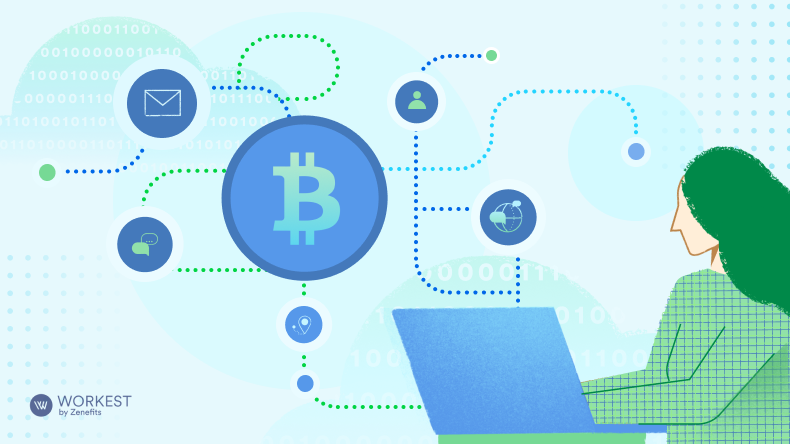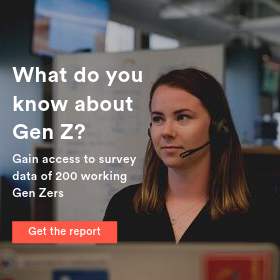What does the term “Web 3.0” actually mean and what opportunities does it present for your small company? Find out, here.

Here's what you need to know:
-
The key defining features of Web 3.0 are that it’s decentralized, permissionless, and pertains to artificial intelligence, connectivity, and more
-
Some examples of Web 3.0 include Apple’s Siri, NFTs, and cryptocurrencies, and blockchain is the technology that is enabling many of these advances
-
It’s always been crucial for businesses to understand how technology evolves in order to keep up with trends and adapt to customer needs
-
Ways your business can prepare for Web 3.0 include hiring the right talent or training your existing talent, and being highly user-centric
-
Your business can also prepare by investing in AI technologies that provide a personalized experience and accepting cryptocurrencies as payment (however, there are risks associated with cryptocurrencies)
-
Even if your company is not ready to make any big changes, it’s important to at least understand the terms and principles around Web 3.0
The internet has evolved tremendously since the very 1st website was launched in 1991. You can actually still visit that website today!
The way the internet has grown since then has drastically impacted businesses everywhere; they either adapted, or were left behind (remember Blackberry and Blockbuster?).
You’ve likely heard the term Web 3.0 by now, especially if you work in the technology sector. According to Jason Schwartz, Web 3.0 expert and co-founder of Chain Champs, small businesses should be paying attention: “As new technologies and paradigms are developed, new opportunities are created. It’s a blue sky opportunity.”
So what does the term “Web 3.0” actually mean? And what opportunities does it present for your small business? Below we discuss the evolution of the Web, and what it means for your company.
A brief history: What are Web 1.0, Web 2.0, and Web 3.0?
Before we delve into how businesses will be impacted by the evolution towards Web 3.0, it’s important to understand the background of Web 1.0, to Web 2.0, to Web 3.0.
What is Web 1.0?
Web 1.0 is used to describe the earliest version of the internet. It can also be described as “the static web,” according to Forbes. A select few created web pages that were read-only, and couldn’t be edited, so there was minimal interaction involved.
Some examples of Web 1.0 include:
- Static websites (like personal websites)
- Geocities pages (almost all of which are archived now)
- eBay
- PayPal
What is Web 2.0?
The major shift from Web 1.0 to Web 2.0 was its interactivity. This is why it’s sometimes referred to as the “dynamic web.”
These websites allowed people to create, share, and interact with one another. The largest association people have with Web 2.0 are social media websites that emerged during this time.
Some examples of Web 2.0 include:
- YouTube
- Blogs
What is Web 3.0?
So what exactly is Web 3.0, given that social media websites (a big part of Web 2.0) still exist today? While concrete examples of Web 3.0 are present today in various forms, it’s still very much evolving.
This presents exciting opportunities for businesses (more on this below). Even though it’s difficult to clearly define something that is still evolving, Forbes refers to Web 3.0 as the “read/write/own” upgrade to the internet.
The key defining features of Web 3.0 are that it is:
- Decentralized: This means the web is owned by the masses, rather than a small group of people. In other words, it’s more democratic and user-centric.
- Trustless and permissionless: This means everyone is able to participate, and anyone can interact with the technologies instead of going through intermediaries (i.e. big companies).
- Artificial intelligence and machine learning: In this new age of technology, machines can learn from users, and understand information similarly to humans.
- Connectivity and ubiquity: With Web 3.0, everything is connected, and multiple devices can connect to the same data source. This is what made “The Internet of Things” possible.
Some examples of Web 3.0 include:
It’s also important to note that blockchain is the technology that is enabling these advances. Cryptocurrencies, tokens, and NFTs are all enabled by blockchain.
What does Web 3.0 mean for your business?
It’s always been crucial for businesses to understand how technology evolves in order to keep up with trends and adapt to customer needs.
And now that we understand what Web 3.0 is, you might be wondering how you can leverage it in your own business.
According to Jason Schwartz, both large and small companies need to pay attention to Web 3.0 to stay current, and not get left behind: “As new technologies and paradigms are developed, new opportunities are created. Just as we didn’t know about Amazon, eBay, PayPal before Web 1.0, or Facebook, Twitter and LinkedIn in Web 2.0, new companies will emerge with an understanding of the technology that resonates with users.”
In other words, businesses need to stay up to date, or they risk missing the Web 3.0 wave.
According to Schwartz, users are the focus with Web 3.0, with one of the biggest differences between Web 2.0 and 3.0 is that users own their own data, as opposed to businesses: “We will own our profiles, our personas, and our data, and we can choose who gets that access.”
This means that businesses can’t expect customers to simply use their product and freely provide their data. The idea is that if a company is making money from your profile, then you should get a cut, or at least benefit from a more personalized experience.
How can your business prepare as Web 3.0 continues to evolve?
Even though it’s unclear how Web 3.0 will fully evolve, there are ways your business can prepare and catch the “Web 3.0 wave.”
1. Hire the right talent or train your existing talent
Both large and small companies will need to make sure they hire and train people to keep up with Web 3.0 trends. This means hiring data experts who can find meaningful information in large datasets, or providing training to your existing employees.
2. Be highly user-focused
One of the main facets of Web 3.0 is the emphasis on users. According to Matt Bertram, who specializes in digital growth strategies, businesses need to focus on UX, UI, and how they interact with users online: “They really need to enhance transparency and authenticity as we move into a decentralized structure. Users are going to be able to take more control of their data. It’s going to be more like you’re interacting with each other.”
In terms of concrete strategies, this means being hyper-transparent to your customers through your website’s UX. Examples of this include:
- Being clear about where their data is going through deliberate messaging
- Building trust by clarifying irreversible actions. An example of this is apps letting users know they can only change their birthday once.
3. Invest in AI technologies that provide a personalized experience
One of the main pillars of Web 3.0 centers around machine learning and artificial intelligence (AI). Related to the above, your users and customers are likely looking for a more personalized experience, rather than “one size fits all.”
Your users and customers are likely looking for a more personalized experience, rather than “one size fits all.”
There are dozens of apps that exist for you to take your website to the next level by analyzing user behavior, and providing a custom experience. Some examples of this include:
- Nosto: This technology looks at shopper behavior on eCommerce websites to provide a completely tailored experience and recommendations for each shopper.
- Spotify’s weekly discover playlist: Spotify’s algorithm creates a curated playlist for each unique user.
- Netflix’s relevant rating system: The rating shows an individual rating based on what you may like, instead of a generic global rating.
4. Accept cryptocurrencies as payment
Another major marker of Web 3.0 is cryptocurrencies and blockchain. Many companies (usually larger ones) are now accepting cryptocurrencies as a way of paying for their goods.
As a small company, it’s something to explore if you operate in the technology sector, but it’s crucial to do your research and make sure it’s the right decision for your company. According to the U.S. Chamber of Commerce, the pros and cons should be considered thoroughly.
Some factors to consider include:
- Bitcoin transactions are irreversible: “This means that both the customer and merchant must have a great deal of trust in each other.”
- The tax implications need to be thoroughly understood by your company.
- For small businesses, accepting crypto might not be appropriate for all sales. Inc. suggests that small businesses only accept crypto only for big-ticket purchases.
One major caveat here is that since crypto isn’t as regulated as other currencies, there are risks associated with introducing this payment method. For example, at the time of writing this, cryptocurrency exchange FTX is filing for bankruptcy.
Web 3.0, small businesses, and an ongoing evolution
Web 3.0 presents exciting new opportunities for small businesses because it’s still somewhat new to most companies. As Schwartz points out, “If ever we were going to take a risk, explore, now is the time. It’s small companies that are going to drive the future, and build a new world.”
While accepting cryptocurrencies might not be the right fit for your company, there are other ways you can dip your toes in the Web 3.0 world. These include providing personalized experiences to your customers using existing apps and making sure your existing team is ready to ride the Web 3.0 wave.
So even if your company is not ready to make any big changes, it’s important to at least understand the terms and the principles around Web 3.0.







